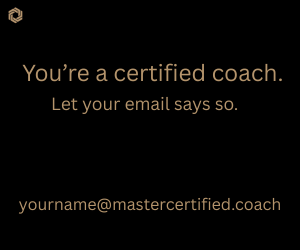Building a strong coaching culture in an organization is an excellent way to drive performance against strategic goals, create a point of difference and improve engagement, productivity and retention. However, when endeavoring to create a coaching culture, there are five main missteps that organizations make that can sabotage the process, despite the best of intentions.
Misstep 1: Developing a coaching culture is untethered from the organization’s strategic goals.
If the goal of developing a coaching culture is seen as independent from the organization’s other strategic goals, values and vision, it’s destined to fail. A coaching culture must be aligned and utilized as a means to drive progress against strategic goals. Is the desired coaching culture a vehicle to improve performance? Engage or empower employees? Support a change management process? Upskill teams? Deliver more innovation?
Organizations should start by considering their short–, mid– and long–term strategic goals and how developing and embedding a coaching culture will help achieve those goals. As coaches, we can query this from the outset to make sure the organization is on the right path.
Misstep 2: People in the organization aren’t upskilled in coaching.
A true coaching culture is more than just bringing in external coaches — it’s about building the capacity to coach others at all levels of the organization. Developing this skill is essential for truly embedding coaching into the organizational culture.
The process of upskilling an organization in coaching will usually involve engaging external trainers to upskill managers on how to utilize coaching as a leadership tool. While this may seem like a quick way to put us coaches and trainers out of a job, it’s actually quite the opposite. When delivered effectively, our role becomes that of a strategic partner who guides the organization to maintain the coaching culture over time.
Misstep 3: Coaching isn’t structured and woven into the learning and development process.
Without using coaching to help apply training and identify and overcome blind spots, learning and development (L&D) can suffer. Too often organizations invest in structured training programs only to see the trainees fail to apply the learnings and fall back into old habits. Leaving it up to the employee to change their behavior in line with the training and be accountable to making those changes stick won’t always work. Why do we expect employees to be able to quickly unlearn old behaviors and adopt new ones with very little support?
This is where having a coaching culture in place can help. In coaching cultures, coaching will be a necessary and structured step in the L&D process. The Center for Creative Leadership recommends a 70-20-10 split between on-the-job training, developmental relationship learning (such as coaching) and formal training. Through coaching, employees are supported and held accountable throughout the learning process to apply the learnings gained in formal training in on-the-job settings.
Misstep 4: Senior leaders aren’t driving the coaching culture.
Efforts to develop a coaching culture often don’t start at the top. Rather, employees try to push the approach up the ranks. Without senior leaders backing the move to adopt a coaching culture 100% and also modeling it to the organization, the employees driving the process can become unmotivated and the desired coaching culture may never come to fruition.
To develop and embed a coaching culture, it needs to be clear to everyone in the organization that coaching is a top priority. The only way to do this is to have the process driven from the top down. As coaches, we can help by finding ways to gain buy-in from the leadership team early in the process. Often this starts with executives experiencing coaching and seeing the benefits firsthand.
Misstep 5: There isn’t the right balance between individual coaching, group coaching and team coaching.
Many organizations that say they want to develop a coaching culture overlook the importance of providing a cross–section of coaching options including individual, group and team coaching. All three are important and if the incorrect balance is struck, it can impact the value of coaching in the organization.
For example, individual coaching may help each employee perform better and remain accountable to their goals. It may also help them relate better to other people in the organization. But what it won’t do is create cohesion and direction for a team or give coaching recipients the opportunity to learn from others in their group while still pursuing their own purpose. This is where team or group coaching can add important additional dimensions.
Aspiring to develop a coaching culture is a worthy pursuit; however, if the incorrect steps are taken, it can fall apart before it takes hold and employees can become disillusioned. A true coaching culture relies on fully prioritizing and committing to the process. Avoiding these common missteps is a good place to start.
© 2021 Marianne Bateup, Abilitise Pty Ltd, Some Rights Reserved
Disclaimer
The views and opinions expressed in guest posts featured on this blog are those of the author and do not necessarily reflect the opinions and views of the International Coach Federation (ICF). The publication of a guest post on the ICF Blog does not equate to an ICF endorsement or guarantee of the products or services provided by the author.
Additionally, for the purpose of full disclosure and as a disclaimer of liability, this content was possibly generated using the assistance of an AI program. Its contents, either in whole or in part, have been reviewed and revised by a human. Nevertheless, the reader/user is responsible for verifying the information presented and should not rely upon this article or post as providing any specific professional advice or counsel. Its contents are provided “as is,” and ICF makes no representations or warranties as to its accuracy or completeness and to the fullest extent permitted by applicable law specifically disclaims any and all liability for any damages or injuries resulting from use of or reliance thereupon.
Authors
Post Type
Blog
Audience Type
HR & Organizational Leaders, Managers/Leaders Using Coaching Skills
Topic
Becoming a Sustainable Coaching Culture, Coaching in Organizations
Related Posts
From Check-the-Box to Culture Shift: Becoming a Sustainable Coaching Culture
There’s a quiet revolution happening inside organizations — and it doesn’t roar. It listens. It…
Cultivating Coaching Cultures That Shape Individual Contributors Into Leaders
In my coaching work with organizations, I continue to see a recurring…
Measuring Coaching ROI and the Ripple Effect
A Moment of Realization: When Coaching ROI Becomes Visible “I never envisioned…








